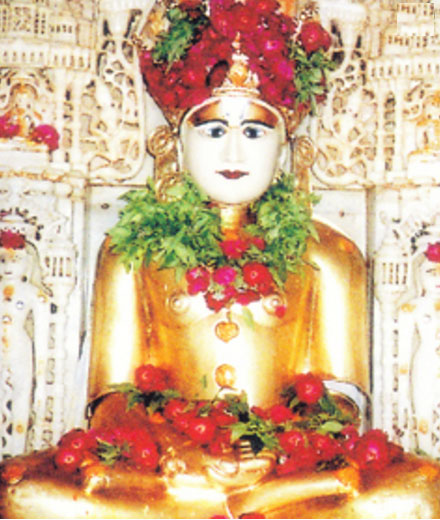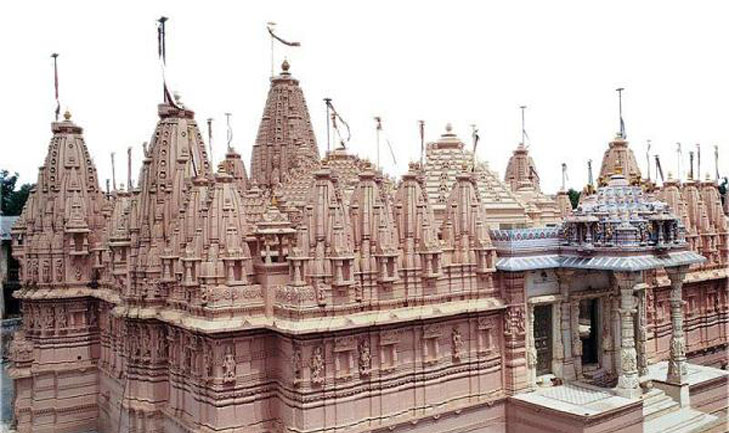Shankeshwar Jain Tirth - Bh. Parshwanath
Patan, Gujarat
 |
Shankeshwar Taluk, Sami, Patan, Gujarat
Location : The nearest railway station of Harij is at a distance of 10 kilometers and Viramgam is at a distance of 62 Kilometers. Bus service and private vehicles are available. There are excellent board and lodging provisions. Also, there are an Upashray, an Ayambilshala, a Jnanamandir, a Jnanabhandar, a Pathshala and a hall where food is given to pilgrims for use of the journey.
Main Idol : Nearly 182 cms. high, white-colored idol of Bhagawan Shankheshvar Parshanath in the Padmasana posture.
Shankheswar is considered to be the most miraculous and universally revered among the Jain pilgrimages of India. Shankheshwar and Nakoda are those two pilgrimages about which it is famous that the wishes of the devotees are fulfilled here. The devotees observe three fasts for worshipping this pilgrimage which in traditional vocabulary are called 'Tela' or 'Attham'. It is said that the worship of Shankheshwar pilgrimage performed with 'Attham' penance (fast) protects from peril and promotes happiness and prosperity.
Shankheshwar means the lord of the conchshells. According to mythological references, in the battle that took place between Jarasandh and Lord Krishna, Jarasandh threw 'Jara' on the army of Krishna. Then the evil effect of 'Jara' was rendered ineffective with the water consecrated by this image of the Lord.
In Samvat 1155, inspired by Acharya Devendra Suri, Siddharaj Jai Singh's prime-minister Sajjan Shah got the Shankheshwar Tirth restored. On the inspiration of Acharya Shree Vardhmaan Suri, Mahamantri Vastupal-Tejpal got the necessary renovation of this pilgrimage done and on the summits of fifty-two edifices installed golden pots. In Samvat 1302, according to available references, King Durjansalya also got this temple renovated.
Under the anti-temple campaign and invasions of Alauddin Khilji, heavy damage was caused to this temple also, but the image had already been transferred by the 'Sangh' (religious organisation). In Samvat 1656, emperor Shahjehan permitted the construction of the pilgrimage by issuing an imperial order. In Samvat 1760, according to an available reference, the pilgrimage was consecrated again by Acharya Vijayratna Suri. Within the sprawling precincts of the Shankheshwar pilgrimage, several mini-temples have been constructed, besides the main temple. That is why it is also called Fifty-two Jina-abodes. There are several temples inside and outside the main temple, notable among them being Aagam Temple, 108 Parshwanath Jinalaya, Dadabari etc.
The main pilgrimage temple at the center of the sprawling ramparts looks like a divine 'Vimaan' (Aeroplane) descended on this earth. The small and big bells hanging from the summits automatically move to and fro with the gush of winds. The ringing of bells sounds like music, and makes the hearts of the devotees vibrate musically.
Shankheshwar pilgrimage conveys to the sleeping humanity the message of awakening. Shankeshwar is the source of all the happiness for getting rid of the disasters of life.
 |
-----------------------------------------------------
From : World Renowned Jain Pilgrimages Reverence And Art
By : Mahopadhyaya Lalitprabh Sagar Ji
-----------------------------------------------------
Mail to : Ahimsa Foundation
www.jainsamaj.org
R310812